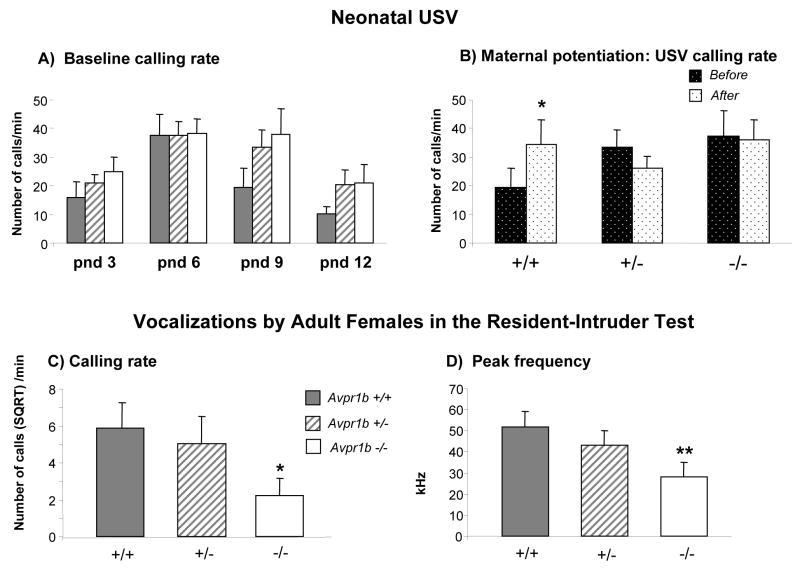Figure 1.
Ultrasonic vocalizations (USVs) in Avpr1b mice. A) Number of USV on postnatal day (pnd) 3, 6, 9 and 12 in response to social separation during a five minute session. No consistent genotype differences were detected across the four ages tested. B) Number of USVs emitted on pnd 9 during the maternal potentiation test by pups during the second five min separation session, following a five min reunion. Before: first period of five min isolation from the mother and siblings. After: second period of isolation, following five min of reunion with the mother and entire litter. Avpr1b +/+ mice emitted more calls (*p< .05) during the second separation after reunion, displaying the expected maternal potentiation. Avpr1b +/− and Avpr1b −/− mice failed to show an effect of the reunion with their mother and siblings on number of calls emitted during the second separation. C) Number of USVs emitted by resident female mice (four months of age) when exposed to a C57Bl/6J adult female intruder during the Resident-Intruder test. Avpr1b −/− emitted significantly fewer USVs in comparison to Avpr1b +/+ (*p<.05). D) Avpr1b −/− emitted calls with lower peak frequencies than Avpr1b +/+ (**p <.01) during the Resident-Intruder test. Data for number of USVs (panel C) are expressed as square root mean ± SEM. In the graphs A, C and D, data are expressed as mean ± SEM. Panel A and B Avpr1b +/+ (n = 9); Avpr1b +/− (n = 31); Avpr1b −/− (n = 17). Panel C and D Avpr1b +/+ (n = 10); Avpr1b +/− (n = 11); Avpr1b −/− (n = 11). Modified from (Scattoni et al., 2008).

